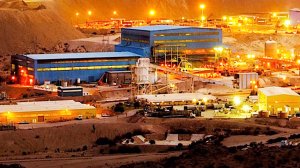JOHANNESBURG (miningweekly.com) – Argentina is the next frontier for copper growth, “no question”, Glencore CEO Gary Nagle highlighted on Wednesday when the London- and Johannesburg-listed diversified mining and marketing company outlined a growth pipeline that has the capacity to double the company's annual production to two-million tonnes of copper a year.
Low capital brownfield projects are the predominant assets within the portfolio, and these will be brought to market in a value accretive way, Nagle assured during the reporting of 33%-lower, $6.3-billion half-year earnings before interest, taxes, depreciation and arbitration (Ebitda) and 9% higher funds from operations. (Also watch attached Creamer Media video.)
Investment in copper is focused particularly on two Argentinian projects – MARA, located in Argentina’s Catamarca province, and El Pachon, in the South American country’s San Juan province, about 2 km from the Chilean border.
The brownfield MARA has the Alumbrera processing plant and associated infrastructure.
“We’re calling out approximately $400-million between 2024 and 2026 particularly on MARA and El Pachon.
“Argentina looks like a very exciting jurisdiction to invest in. Our El Pachon greenfield project there is just enormous.
“We've had to stop our drilling programme, because the more we drill, the more we find and we don't need to find anymore,” Nagle said during the presentation covered by Mining Weekly.
At the brownfield end is MARA. Being effectively an extension of the old operations that Glencore has in Argentina, low capital-intensity MARA is likely to be first to market.
“We can bring on up to another million tons of copper and we’ll do so over time, as the market needs it,” Nagle emphasised.
Regarding coal, he added: “Coal prices, particularly out of Newcastle, are looking very strong.
“The world continues to be hungry for energy as it decarbonises. It needs that high-quality coal, and we provide that.”
Steelmaking coal is now a key part of the business. “It's certainly a transition-enabling commodity that’s critical for decarbonisation infrastructure.
“It’s supply-and-demand scenario looks very exciting, given the inability for major ramp-up in supply. It’s a commodity that is not easily substituted or removed from requirements of steelmaking,” Nagle highlighted.
Battery and other decarbonisation materials supplied by Glencore include South Africa-centred ferrochrome and vanadium, as well as zinc, nickel, lead, cobalt and manganese.
“These are key inputs into decarbonisation, key inputs into industrialisation. We’ve become a one-stop shop in supplying all the needs of our customers with respect to these commodities.”
Glencore’s recycling business is also charging on.
“We continue to produce all the critical minerals out of our recycling business. It's something that sets us apart from any other competitors, because we're able to provide those recycled materials.
“As we see the world continuing to progress, and we see a ramp-up in end-of-life batteries, particularly out of the battery electric vehicle industry, the recycling business is set to continue to grow,” Nagle added.
The company, which describes itself as being very cash-generative, expects its second-half performance to be “very strong”.
EMAIL THIS ARTICLE SAVE THIS ARTICLE ARTICLE ENQUIRY
To subscribe email subscriptions@creamermedia.co.za or click here
To advertise email advertising@creamermedia.co.za or click here










